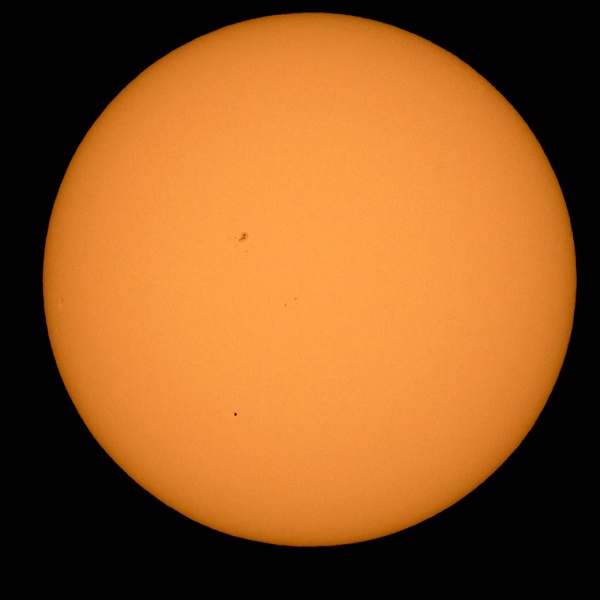Rare Mercury Completes Transit Across Sun and What It Really Means
| Ana Verayo | | May 10, 2016 01:29 AM EDT |
(Photo : NASA/Bill Ingalls) Can you see it? The planet Mercury is seen in silhouette, lower third of image, as it transits across the face of the sun Monday, May 9, 2016, as viewed from Boyertown, Pennsylvania.
For those who missed this cosmic event yesterday, Mercury just passed directly between the sun and Earth for the first time in 10 years. The tiniest planet in our solar system and the nearest one to the sun can be viewed as a small black dot that transitioned and made its way across the blazing face of our host star.
Like Us on Facebook
Astronomers say that this celestial event is rare, as it only occurs about 13 times in every 100 years. The next Mercury transit will happen again in 2019, and after that, the year 2032.
Mercury may pass between the sun and the Earth similar to a lunar eclipse however this transit spanned a total of seven and half hours, as the tiny world traversed through the sun. This event was visible in the eastern United States and Canada in North America, most of South America and Western Europe, along with West Africa.
However, in Eastern Europe, the Middle East and most of the African continent, Mercury was obscured by sunset, where the event finished earlier. Japan, some Western Pacific Islands, Australia and New Zealand unfortunately did not entirely see the show.
For those who were not in the visible regions, stargazers can watch the event on various live streaming channels online such as NASA TV, the European Space Agency or Slooh. Some observatories even opened their doors to the public such as the Royal Observatory Greenwich, hosting the transit on big screens live.
Apart from this, astronomers also utilized the Great Equatorial Telescope housed at the Observatory to view the fantastic transit, measuring 28 inches wide that is considered to be the largest lensed telescope in the United Kingdom. Using a new solar filter, the Great Equatorial Telescope made this viewing possible to the public, as the last time it was turned towards the sun was in 1927.
In the past, astronomers use the Mercury transit as a crucial scientific measuring tool, where it allowed them to compute the distances of the planets in the solar system. According to NASA's planetary science division director, Jim Green, today, this Mercury's transit was observed by astronomers to learn more about its thin and tenuous atmosphere.
Tagsmercury transit 2016, Mercury, Sun, earth mercury sun transit
©2015 Chinatopix All rights reserved. Do not reproduce without permission
EDITOR'S PICKS
-

Did the Trump administration just announce plans for a trade war with ‘hostile’ China and Russia?
-

US Senate passes Taiwan travel bill slammed by China
-

As Yan Sihong’s family grieves, here are other Chinese students who went missing abroad. Some have never been found
-

Beijing blasts Western critics who ‘smear China’ with the term sharp power
-

China Envoy Seeks to Defuse Tensions With U.S. as a Trade War Brews
-

Singapore's Deputy PM Provides Bitcoin Vote of Confidence Amid China's Blanket Bans
-

China warns investors over risks in overseas virtual currency trading
-

Chinese government most trustworthy: survey
-

Kashima Antlers On Course For Back-To-Back Titles
MOST POPULAR
LATEST NEWS
Zhou Yongkang: China's Former Security Chief Sentenced to Life in Prison

China's former Chief of the Ministry of Public Security, Zhou Yongkang, has been given a life sentence after he was found guilty of abusing his office, bribery and deliberately ... Full Article
TRENDING STORY

China Pork Prices Expected to Stabilize As The Supplies Recover

Elephone P9000 Smartphone is now on Sale on Amazon India

There's a Big Chance Cliffhangers Won't Still Be Resolved When Grey's Anatomy Season 13 Returns

Supreme Court Ruled on Samsung vs Apple Dispute for Patent Infringement

Microsoft Surface Pro 5 Rumors and Release Date: What is the Latest?











